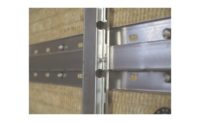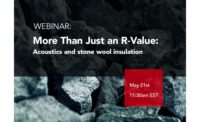Knight Wall Systems announced a collaboration with Rockwool wherein both companies will market the industry’s first true continuous insulation (CI) rainscreen attachment system utilizing stone wool insulation rather than rigid foam, according to company president Doug Knight.
In this arrangement, Comfortboard 110 will now be marketed as a complete rainscreen solution alongside Knight’s CI System and HCI System. “There are many advantages to using stone wool insulation,” Knight said. “Fire resistance and sustainability are the first two that come to mind. But with Comfortboard 110’s rigidity, we can also offer true continuous insulation, which the market prefers.”
Developed for use as an exterior continuous insulation in commercial applications, Comfortboard 110 is thermally efficient, moisture-resistant, vapor permeable and supplants other external sheathing insulations to create high-performance wall assemblies. These assemblies are effective against fire, moisture and thermal bridging, and allow for superior drying potential.
Both the Knight CI System and HCI System provide outstanding thermal performance by way of true CI (no penetrations through the insulation except fasteners), while accommodating nearly any façade or cladding system up to 20 lbs. per square foot, providing maximum versatility and durability with ease of design and installation. The CI System uses unique ¾” deep vertical box girts, called CI-Girts; and the HCI System uses unique ¾” deep horizontal girts, called HCI Girts. Both are designed to properly disburse the façade loads over exterior stone wool board insulation, with only unique thermally isolated fasteners penetrating the thermal barrier, thus minimizing thermal bridging. Both systems’ components are produced in standard and custom lengths, in either 16- or 18-gauge Zn-Al-Mg -coated steel (standard mill silver or black PVDF coated) or stainless steel.
“We believe this new product pairing will be highly attractive to modern architects and building envelope specialists,” Knight said. “Especially LEED projects and construction where a bulletproof sustainable design is the goal.”








